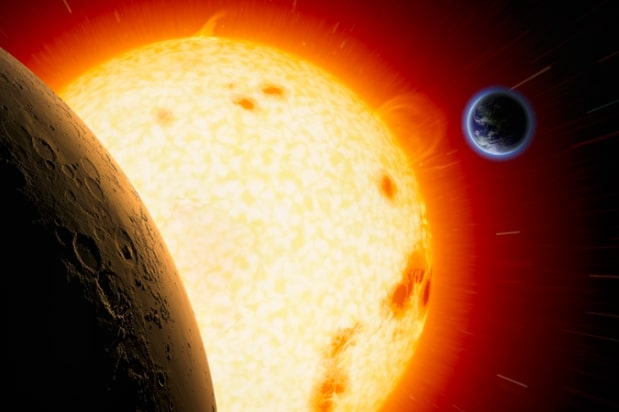NASA has established 63 “Point Objectives” which serve as the foundation for conducting a new wave of space exploration. The overall focus of one major component of these objects is infrastructure. The category aims to build solid infrastructure and technology to enable humans to undergo missions to and around the Moon, followed by the first crewed missions to Mars.
Advancing a gradual build-up approach by NASA, these missions will incorporate technologies and operations that help humans live and work on a planetary surface other than Earth and safeguard their return after completing their missions.
Infrastructure Objectives
The infrastructure objectives encompass developing and maintaining the physical and technological assets required for the agency to achieve its mission objectives – from building launch facilities to developing new spacecraft and instruments.
One of the key aspects of the infrastructure category is the modernization and upgrade of its launch facilities. NASA currently has several launch facilities including the Kennedy Space Center in Florida, Wallops Island In Virginia, and Vandenberg Air Force Base in California. These facilities are critical for launching crewed and uncrewed missions and supporting the International Space Station.
NASA is developing new space systems such as the Space Launch System (SLS) and the Orion spacecraft. These vehicles will require specialized launch facilities and infrastructure to support their missions.
These are the Infrastructure initiatives NASA has established for itself:
“OP-1L: Conduct human research and technology demonstrations on the surface of Earth, low-Earth orbit platforms, cislunar platforms, and on the surface of the Moon, to evaluate the effects of extended mission durations on the performance of crew and systems, reduce risk, and shorten the timeframe for system testing and readiness prior to the initial human Mars exploration campaign.
OP-2LM: Optimize operations, training and interaction between the team on Earth, crew members in orbit, and a Martian surface team considering communication delays, autonomy level, and time required for an early return to the Earth.
OP-3LM: Characterize accessible resources, gather scientific research data, and analyze potential reserves to satisfy science and technology objectives and enable the use of resources on successive missions.
OP-4LM: Establish command and control processes, common interfaces, and ground systems that will support expanding human missions on the Moon and Mars.
OP-5LM: Operate surface mobility systems, e.g., extra-vehicular activity (EVA) suits, tools and vehicles.
OP-6L: Evaluate, understand, and mitigate the impacts on crew health and performance of a long deep space orbital mission, followed by partial gravity surface operations on the Moon.
OP-7LM: Validate readiness of systems and operations to support crew health and performance for the initial human Mars exploration campaign.
OP-8LM: Demonstrate the capability to find, service, upgrade, or utilize instruments and equipment from robotic landers or previous human missions on the surface of the Moon and Mars.
OP-9LM: Demonstrate the capability of integrated robotic systems to support and maximize the useful work performed by crewmembers on the surface, and in orbit. OP-10LM: Demonstrate the capability to operate robotic systems that are used to support crew members on the lunar or Martian surface, autonomously or remotely from the Earth or from orbiting platforms.
OP-11LM: Demonstrate the capability to use commodities produced from planetary surface or in-space resources to reduce the mass required to be transported from Earth. OP-12LM: Establish procedures and systems that will minimize the disturbance to the local environment, maximize the resources available to future explorers, and allow for reuse/recycling of material transported from Earth (and from the lunar surface in the case of Mars) to be used during exploration.”
A key infrastructure objective is the maintenance and enhancement of the International Space Station (ISS). The ISS is a critical asset for NASA, providing a platform for scientific research and technology development in microgravity. NASA is committed to maintaining and enhancing the ISS to support its long-term use until the end of this decade and needs to ensure that it continues to serve as a valuable resource for scientific exploration and discovery. NASA will also be building a small space station – Gateway – in lunar space to support Artemis landings and will also support more than one commercial space stations currently under development. Each platform requires its own specialized infrastructure for some tasks while sharing a common infrastructure for other things.
In addition to launch facilities and the ISS, the infrastructure category also includes the development of new spacecraft and instruments. NASA is constantly exploring new technologies and capabilities to enable it to achieve its mission objectives more effectively and efficiently. One example is the Mars Sample Return mission which will collect samples from the Martian surface and bring them back to Earth for analysis. Not only are launch and mission operations required but also the infrastructure on Earth to receive and safely study materials brought back from Mars – and eventually other worlds.
The infrastructure category also involves the development of new sensors for scientific research including advanced communication systems to support remote operations, as well as the development of new software and data management systems to support scientific research and analysis. Spacecraft are getting smaller and more capable and a robust infrastructure that stays at the leading edge of the required technologies is crucial.
Overall, the infrastructure category’s objectives are critical components of the agency’s mission to explore and discover. From launch facilities to spacecraft and communication tools, the infrastructure category encompasses a broad range of assets and capabilities that are essential for NASA to achieve its mission objectives. As NASA continues to make progress toward its goals, it will undoubtedly rely on the continued development and enhancement of its infrastructure to support its missions and push the boundaries of scientific exploration and discovery.






